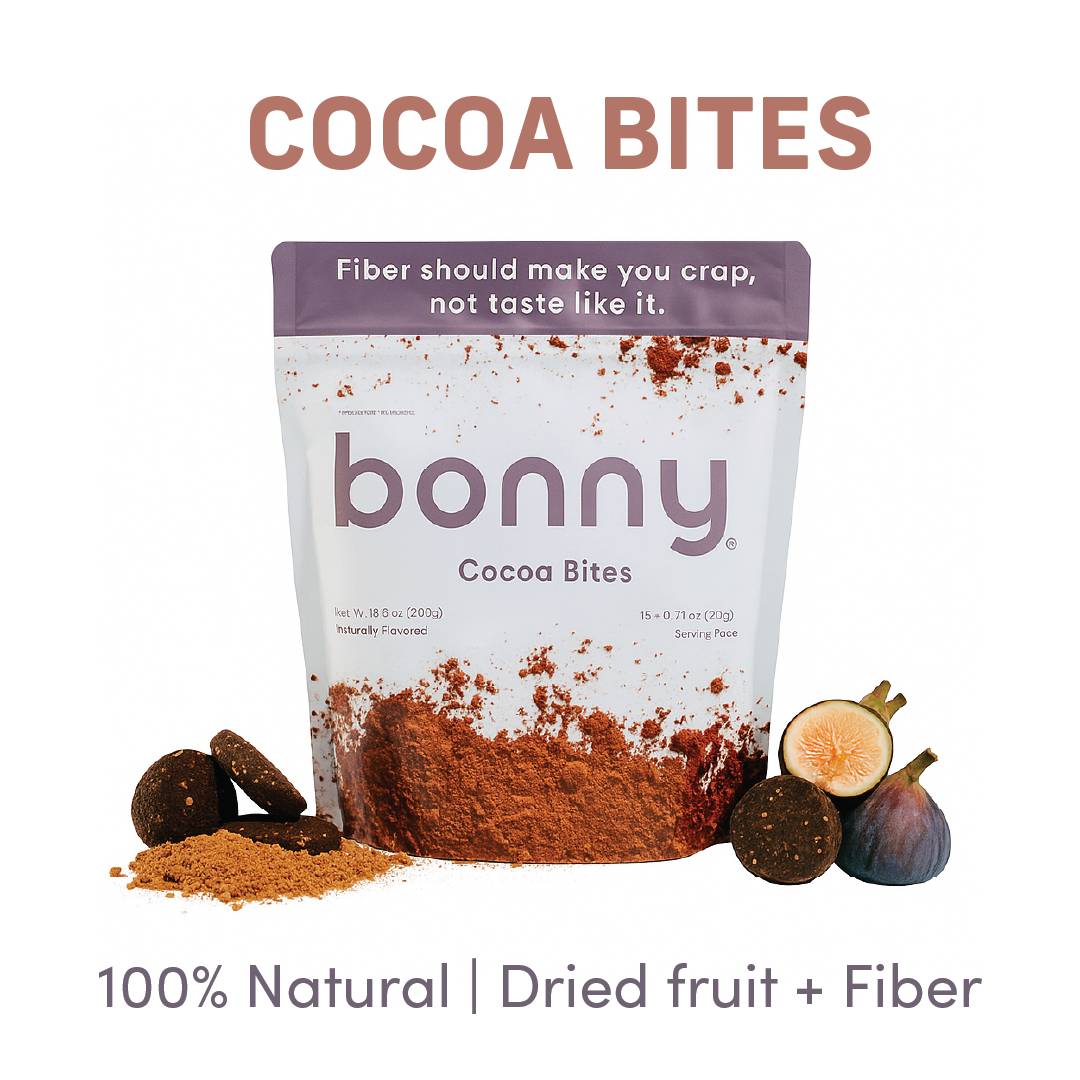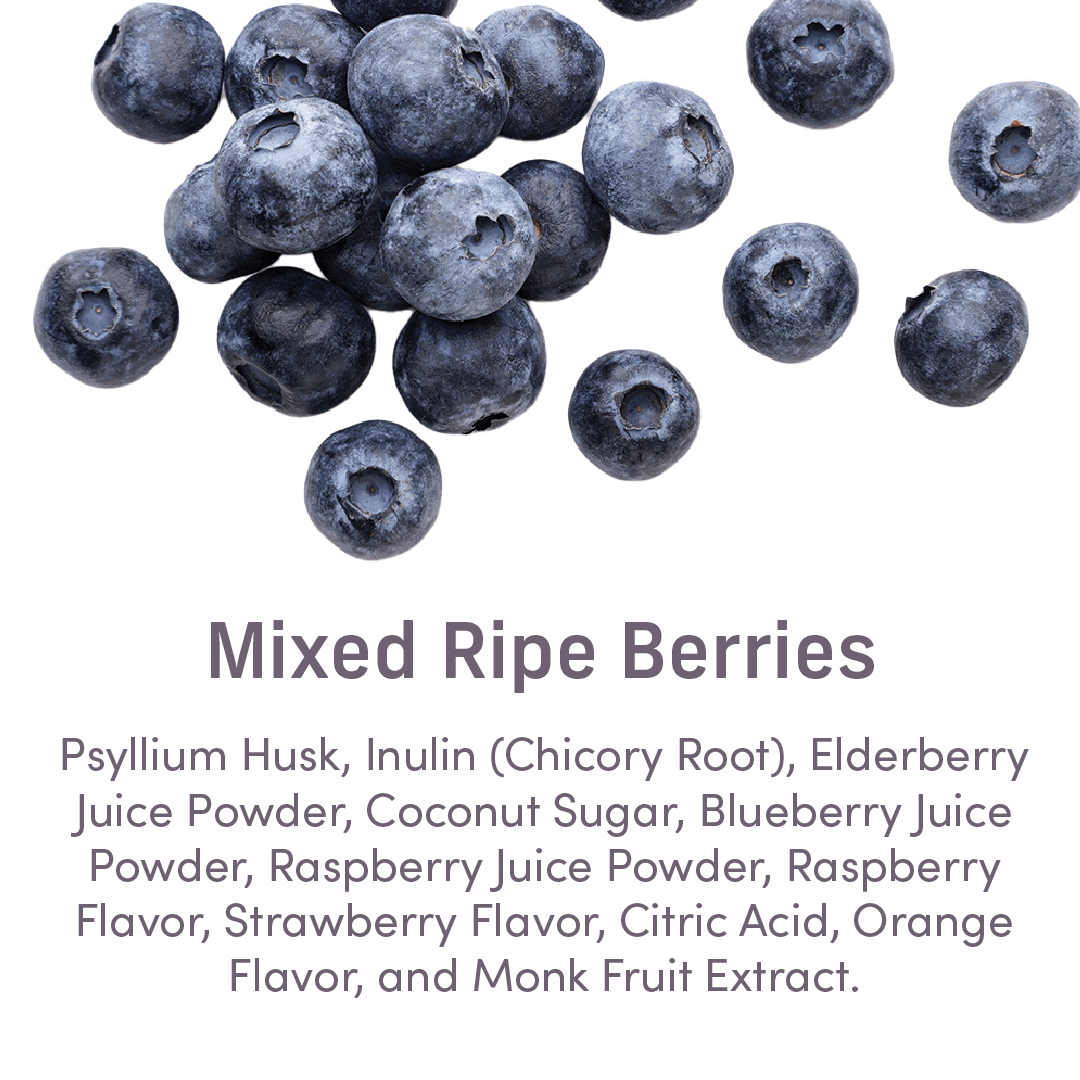Our hunter-gatherer ancestors LOVED fiber. They ate 100 to 150 grams of fiber a day. That’s a lot of fiber!!!!
And how does that compare to today? Well, 95% of Americans don’t get enough daily fiber. The recommendation is 25 grams for women and 38 grams for men. That's a fraction of what our ancient friends ate.
Read on to why today we struggle to get even 25 grams of fiber per day.
The Importance of Fiber

NRDC / Via media.giphy.com
Fiber, our favorite f-word, is an indigestible carbohydrate. Most carbohydrates are broken down by the body into sugar molecules aka glucose, but fiber passes through the body undigested, and with that comes a lot of health benefits.
Fiber is great for the body as it helps with constipation, and bloating, and protects the body by strengthening our immune system, regulating blood sugar, and lowering cholesterol.
Fiber comes in two different kinds: soluble and insoluble. The difference between the two is soluble fiber absorbs water and the other one stays as is. Soluble fiber is the one that turns into a gel, making you feel full, and helps with weight management. Insoluble fiber acts as a magnet bulking up the waste in the body and preparing it for a smooth exit from the body to the toilet.
Fiber Intake During Hunter-Gatherer Time
Let’s do a major throwback. Imagine back to the Paleolithic age and shaggy hunter-gatherer early humans. How do you think their diet compares to ours today? Well, they were healthier than most of us in modern times because they had access to and ate a variety of foods. And all that hunting and gathering was the original CrossFit workout making them physically fit, compared to today’s more sedentary lifestyles (i.e., desk, car, couch, etc.)
Our hunter-gatherer ancestors also used to get a lot more fiber than we currently do. Research shows that our ancestors' estimated fiber intake was around 100-150 grams of fiber, which is 10x greater than the typical fiber intake of Americans today of around 15 grams.
What these hunter-gatherers ate and their eating habits gave birth to the modern-day diet called the Paleo diet. Inspired by the Paleolithic age, also called the Stone Age or caveman diet, this includes eating lean meats, fish, fruits, vegetables, nuts, and seeds. Namely, the kind of foods that in the past could be obtained by hunting and gathering.
But Where Did All The Fiber Go?

The Fast Saga / Via media.giphy.com
Fiber intake has taken different turns. With today's modernization and industrial improvements, you may be wondering why we are still lacking in the fiber department compared to our ancestors. Well, let's take a trip back in time.
Neolithic Revolution
Also called the “birth of agriculture”, this happened when hunter-gatherers switched from roaming from one place to another to establishing farming villages, where they grew their own, preferred crops and bred animals for food. This limited their access to a variety of food options.
Industrial Revolution
The Industrial Revolution transformed largely rural, agrarian societies, particularly in Europe and America into industrialized, urban ones, during the 18th century.
Technology in this era improved significantly but nutritional diversity became secondary. Availability and affordability became more information when it came to what to eat which paved the way for larger corporations and restaurant chains. Food became cheaper and more mass-produced.
Modern-Day Technology and Food
Modern technology improved the shelf-life of food and delivery is just a few clicks away with help from an app in urban centers. Hunter-gathers never had GrubHub or could go through the drive-thru at McDonald's.
NYU School of Global Public Health research shows that the consumption of ultra-processed foods has increased over the past two decades. These ultra-processed foods often come as ready-to-eat or microwavable, include additives, and lack vital nutrients. Health studies have found that higher consumption of these ultra-processed foods is associated with obesity and heart disease.
The Reality of the Fiber Gap
Earlier we mentioned that our hunter-gatherer ancestors ate an estimated 100 to 150 grams of dietary fiber per day. Today, 95% of Americans don’t hit the daily recommended fiber. The USDA recommends getting 25 grams for women and 38 grams for men. This is called the fiber gap.
We get it, it's hard to eat enough fiber via diet alone. Thankfully we are here to help.
Say Hello to Fab Fiber: Bonny

Via media.giphy.com
Bonny is a custom blend fiber powder dedicated to helping close the fiber gap. In fact, Bonny was born out of our founder’s realization that she, too, was not getting enough fiber. With that in mind, her quest for the perfect fiber powder led her to create one. (You can read our founder’s story here.)
Bonny powder contains a blend of psyllium husk and prebiotic inulin. One serving of Bonny is equivalent to 17% of your daily fiber goal.
Bonny powder is all-natural, plant-based, tastes amazing, and makes you go poop. Available in amazing flavors like Apple Pie, Mixed Ripe Berries, and Super Strawberry.
As always, we wish you pleasant poops.




